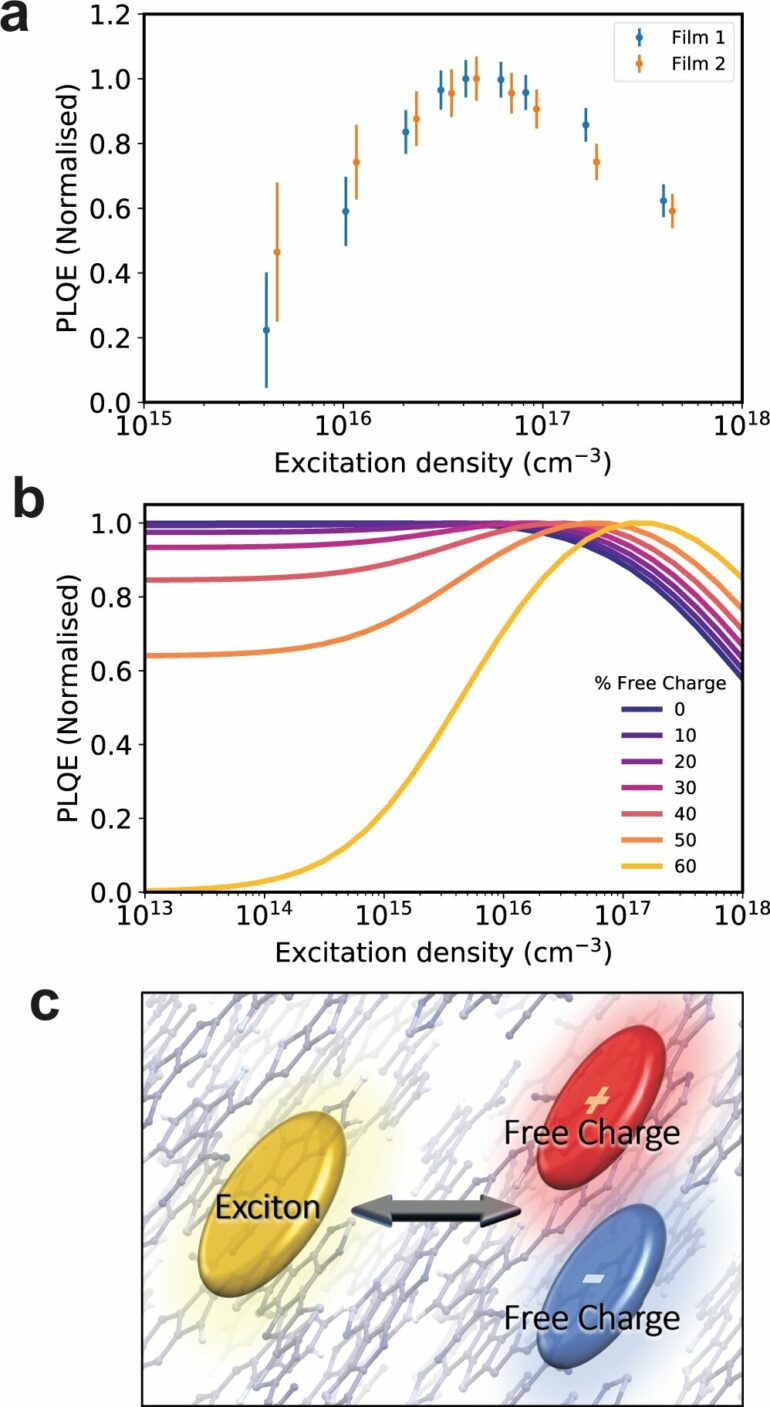Organic solar panels have the potential to rapidly improve our solar capacity. These can be printed like newspaper—and so can be flexible, lightweight, much cheaper to make, and more versatile than current silicon solar technology.
However for over three decades, organic solar panel research has been held back by the fact that when the organic solar panels absorb light, the excited negative electrons and positive charges remain “stuck” together.
In order to generate solar power, these positive and negative charges must be split, or freed from each other. To do this, solar researchers have had to make complicated blends of materials to split the electrons apart to generate electricity. This has added significant complications and has resulted in efficiency losses.
But in a paper published in Nature Communications today, researchers at Te Herenga Waka Victoria University of Wellington and the MacDiarmid Institute for Advanced Materials and Nanotechnology, leading a collaboration with the University of New South Wales and Peking University, have shown that in the one of the newest organic solar materials (named Y6) the electrons are immediately freed after being excited by light. This will improve power efficiency and allow researchers to move to simpler designs—closer to traditional silicon solar panels.
To prove that the electrons in the material Y6 were in fact behaving completely differently than expected, researchers led by Dr. Mike Price, Dr. Paul Hume and Prof Justin Hodgkiss conducted a comprehensive series of laser spectroscopy measurements and theoretical calculations. Their work sparks an entirely new direction for the large field of organic solar panel research, letting researchers move beyond the “bound,” or “stuck” electron paradigm of the last 30 years.
More information:
Michael B. Price et al, Free charge photogeneration in a single component high photovoltaic efficiency organic semiconductor, Nature Communications (2022). DOI: 10.1038/s41467-022-30127-8
Provided by
MacDiarmid Institute
Citation:
A step towards cheaper solar power (2022, May 20)
